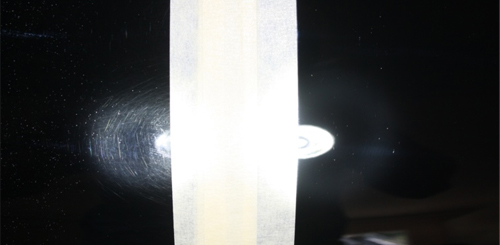I am all sure you are aware that you need to compound and or polish to remove defects. With that said, how do you know you are going about things in the correct manner? How is the paint supposed to look? Why polish after compounding, isn’t it enough? Why cant you just use Meguiar’s 105 and call it done? Lets take a look at the process briefly:
Starting out, you can see the finish was in dire need of some reconditioning. Scratches, RIDS, swirls, oxidation were taking over this paint! So where do you start? Do you use a compound from the start? Do you start with a finishing polish? The correct answer (without having done over 1000 cars in this condition would be to start out with a medium polish and pad combo and check the results. For me, I started this car out with Menzerna powerfinish and a white polishing pad. However, I didn’t get the results I was looking for, so I had to bump up the combo! So what do you think I went to…a cutting pad? a heavy compound? a cutting pad with a lighter polish? AS you can see there are many variables that can produce the desired results! What I actually ended up doing on this car was a three step process using the following combos to give me outstanding results:
Meguiars 105 compound on a white pad
Menzerna 106 on a white pad
Menzerna 85rd on a black pad
*all work was done with a DA polisher
Here is the starting condition of the paint: pretty screwed up!
After compounding, you can see the haze and why you cannot stop after compounding a car and go straight to wax. Sure it looks better, but it still isn’t done right, lacks total gloss, and has actually MILLIONS more scratches in the paint…they are just more uniformed and much smaller! Left side untouched, right side just compounded…
After refining the paint with all the steps, here is what I was left with…a finish that I would gladly put my name on!
here are some 50/50 shots to check out!
Hope that clears up the compound and polishing process for people with questions about how it will look after each step and why each step has its place in the paint correction process!
